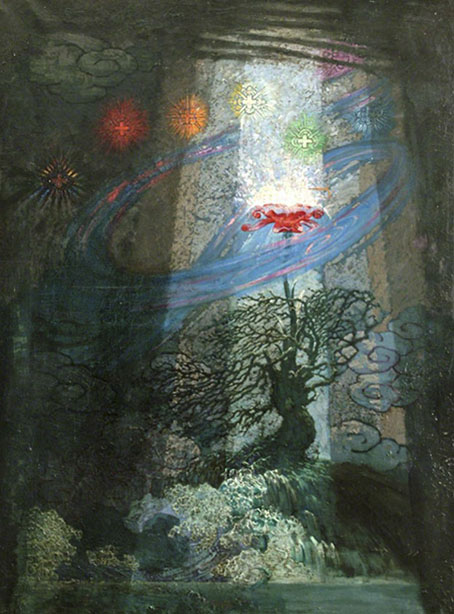
I confess I was initially attracted to this book by the promise of copious illustrations of unusual signboards for inns and public houses but the text is so fascinating I’ll be reading the book in full. The History of Signboards: From the Earliest Times to the Present Day (1866) is a study of the form by Jacob Larwood and John Camden Hotten which has proved popular enough to be reprinted many times to our own present day. Larwood and Hotten divide their research into chapters exploring the main classes of signboard iconography—heraldic, historical, mythological, religious, etc—together with the many varieties of flora and fauna that the signs depict. Further chapters attempt to untangle the later stages of the designs in which basic symbols were brought together to create rebuses and visual puns based on the names of proprietors.

The opening chapter describes the origin of inn signboards in the pre-literate tradition of using signs to indicate the trades being undertaken in a given building, a practice begun by the Romans:
Along with these very simple signs, at a later period, coats of arms, crests, and badges, would gradually make their appearance at the doors of shops and inns. The reasons which dictated the choice of such subjects were various. One of the principal was this. In the Middle Ages, the houses of the nobility, both in town and country, when the family was absent, were used as hostelries for travellers. The family arms always hung in front of the house, and the most conspicuous object in those arms gave a name to the establishment amongst travellers, who, unacquainted with the mysteries of heraldry, called a lion gules or azure by the vernacular name of the Red or Blue Lion. Such coats of arms gradually became a very popular intimation that there was—
“Good entertainment for all that passes,
Horses, mares, men, and asses;”and innkeepers began to adopt them, hanging out red lions and green dragons as the best way to acquaint the public that they offered food and shelter.
Still, as long as civilisation was only at a low ebb, the so-called open-houses few, and competition trifling, signs were of but little use. A few objects, typical of the trade carried on, would suffice; a knife for the cutler, a stocking for the hosier, a hand for the glover, a pair of scissors for the tailor, a bunch of grapes for the vintner, fully answered public requirements. But as luxury increased, and the number of houses or shops dealing in the same article multiplied, something more was wanted. Particular trades continued to be confined to particular streets; the desideratum then was, to give to each shop a name or token by which it might be mentioned in conversation, so that it could be recommended and customers sent to it. Reading was still a scarce acquirement; consequently, to write up the owner’s name would have been of little use. Those that could, advertised their name by a rebus; thus, a hare and a bottle stood for Harebottle, and two cocks for Cox. Others, whose names no rebus could represent, adopted pictorial objects; and, as the quantity of these augmented, new subjects were continually required. The animal kingdom was ransacked, from the mighty elephant to the humble bee, from the eagle to the sparrow; the vegetable kingdom, from the palm-tree and cedar to the marigold and daisy; everything on the earth, and in the firmament above it, was put under contribution. Portraits of the great men of all ages, and views of towns, both painted with a great deal more of fancy than of truth; articles of dress, implements of trades, domestic utensils, things visible and invisible, ea que sunt tamquam ea que non sunt, everything was attempted in order to attract attention and to obtain publicity.
The chapter goes on to explain the evolution of some of the stranger signs—The Hog in Armour, The Goat in Boots—which can be so unpredictable they appear at first to be the products of a kind of folk surrealism. Larwood and Hotten theorise that some of the more peculiar signs were the result of misreadings by the hostelry users, errors which were then passed on once the incorrect name had stuck and a new sign was required. Others might be mistranslations of foreign (usually French) names or phrases. After this you have familiarity leading to deliberate misreading or misnaming:
Along with this practice, there is a tendency to translate a sign into a sort of jocular slang phrase; thus, in the seventeenth century, the Blackmoorshead and Woolpack, in Pimlico, was called the Devil and Bag of Nails by those that frequented that tavern, and by the last part of that name the house is still called at the present day. Thus the Elephant and Castle is vulgarly rendered as the Pig and Tinderbox; the Bear and Ragged Staff, the Angel and Flute; the Eagle and Child, the Bird and Bantling; the Hog in Armour, the Pig in Misery; the Pig in the Pound, the Gentleman in Trouble, &c.
On the subject of vulgar renderings, I’m reminded that a local pub known as The King’s Arms was commonly referred to by friends of mine as The Queen’s Legs, as in “I’ll see you tonight in The Queen’s Legs.” You can’t stop the street from finding its own use for things.




